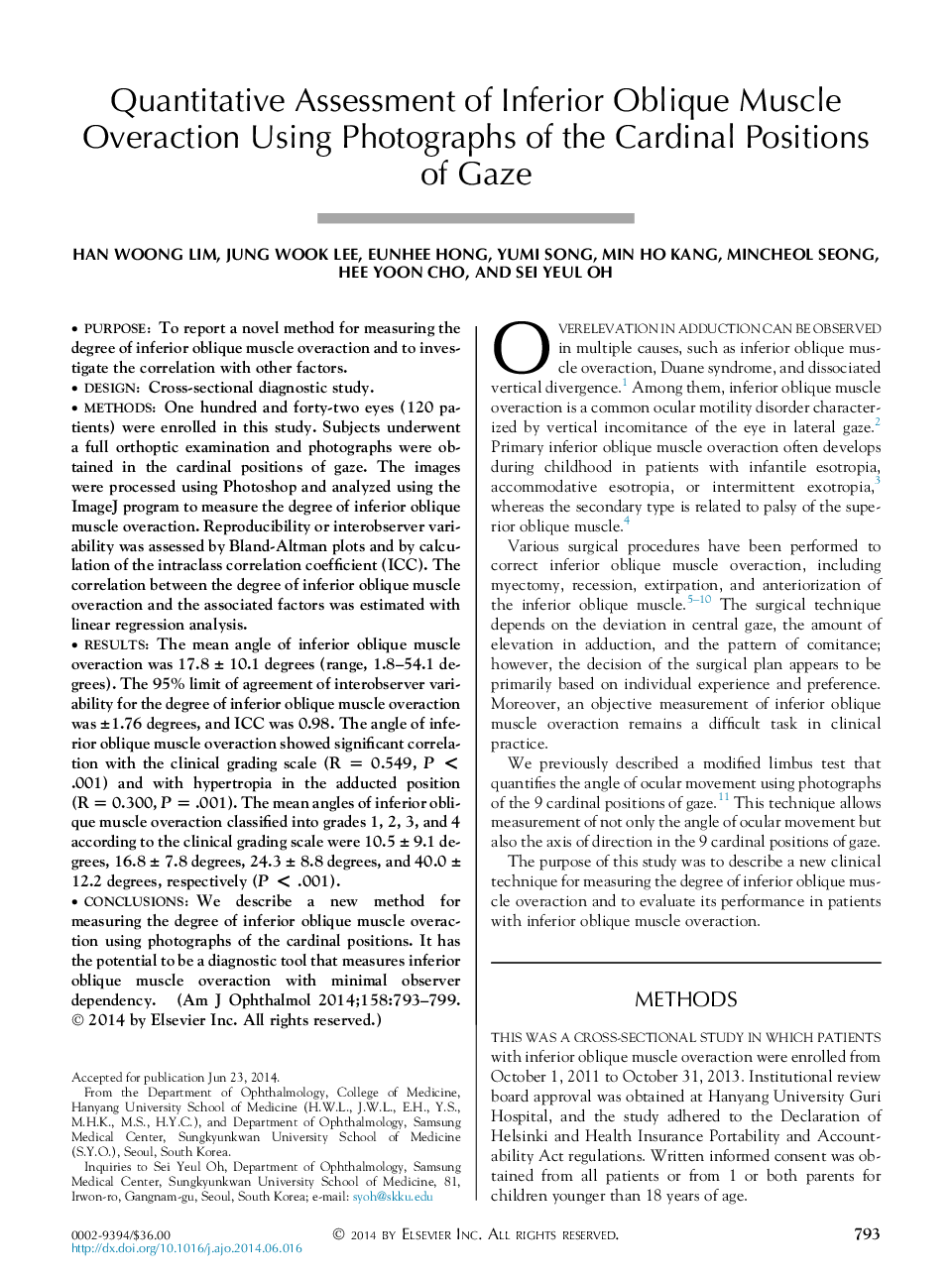| Article ID | Journal | Published Year | Pages | File Type |
|---|---|---|---|---|
| 6195769 | American Journal of Ophthalmology | 2014 | 9 Pages |
PurposeTo report a novel method for measuring the degree of inferior oblique muscle overaction and to investigate the correlation with other factors.DesignCross-sectional diagnostic study.MethodsOne hundred and forty-two eyes (120 patients) were enrolled in this study. Subjects underwent a full orthoptic examination and photographs were obtained in the cardinal positions of gaze. The images were processed using Photoshop and analyzed using the ImageJ program to measure the degree of inferior oblique muscle overaction. Reproducibility or interobserver variability was assessed by Bland-Altman plots and by calculation of the intraclass correlation coefficient (ICC). The correlation between the degree of inferior oblique muscle overaction and the associated factors was estimated with linear regression analysis.ResultsThe mean angle of inferior oblique muscle overaction was 17.8 ± 10.1 degrees (range, 1.8-54.1 degrees). The 95% limit of agreement of interobserver variability for the degree of inferior oblique muscle overaction was ±1.76 degrees, and ICC was 0.98. The angle of inferior oblique muscle overaction showed significant correlation with the clinical grading scale (R = 0.549, P < .001) and with hypertropia in the adducted position (R = 0.300, P = .001). The mean angles of inferior oblique muscle overaction classified into grades 1, 2, 3, and 4 according to the clinical grading scale were 10.5 ± 9.1 degrees, 16.8 ± 7.8 degrees, 24.3 ± 8.8 degrees, and 40.0 ± 12.2 degrees, respectively (P < .001).ConclusionsWe describe a new method for measuring the degree of inferior oblique muscle overaction using photographs of the cardinal positions. It has the potential to be a diagnostic tool that measures inferior oblique muscle overaction with minimal observer dependency.
